Southport Village Voices
An E-Magazine by & for the Residents of Southport
Number 63, May 2015
|
|
| |
"The Boathouse, Barnstable Village" (detail) by Rosanne Francesconi, a new resident of Southport.
Her work, along with the work of other members of The Northside Artists of Cape Cod,
will be displayed in the Mashpee Public Library from June 2 - 30.
|
| |
|
|
|
|
|
|
|
"M" Is For Mother
|
We celebrate Mother's Day on May 10 and in honor of that event I asked two SVV writers -- Ray Schumack and Roy Smith -- to share memories of their mothers. Their stories are below. In addition, I hope you'll read "The Lanyard," by former US Poet Laureate Billy Collins. It captures the relationship between a child and a mother in a way that amuses and moves me every time I read it.
THE LANYARD
The other day as I was ricocheting slowly
off the blue walls of this room
bouncing from typewriter to piano
from bookshelf to an envelope lying on the floor,
I found myself in the "L" section of the dictionary
where my eyes fell upon the word, Lanyard.
No cookie nibbled by a French novelist
could send one more suddenly into the past.
A past where I sat at a workbench
at a camp by a deep Adirondack lake
learning how to braid thin plastic strips into a lanyard.
A gift for my mother.
I had never seen anyone use a lanyard.
Or wear one, if that's what you did with them.
But that did not keep me from crossing strand
over strand
again and again until I had made a boxy, red and
white lanyard for my mother.
She gave me life and milk from her breasts,
and I gave her a lanyard
She nursed me in many a sick room,
lifted teaspoons of medicine to my lips,
set cold facecloths on my forehead
then led me out into the airy light
and taught me to walk and swim and I in turn presented her with a lanyard.
"Here are thousands of meals" she said,
"and here is clothing and a good education."
"And here is your lanyard," I replied,
"which I made with a little help from a counselor."
"Here is a breathing body and a beating heart,
strong legs, bones and teeth and two clear eyes
to read the world." she whispered.
"And here," I said, "is the lanyard I made at camp."
"And here," I wish to say to her now,
"is a smaller gift. Not the archaic truth,
that you can never repay your mother,
but the rueful admission that when she took the two-toned lanyard from my hands,
I was as sure as a boy could be
that this useless worthless thing I wove out of boredom
would be enough to make us even."
-- Billy Collins

David Kapp,editor
|
|
 |
|
|
Geraldine: Free Spirit
by Ray Schumack
|
Geraldine Mooney was my mother. She was the greatest presence in my childhood and throughout my life until she died peacefully at age 90. She told me her great grandfather was an artist who came to America from Dublin to paint the ceiling of some government building. I could never verify that; perhaps he was only a house painter. But he did create a large clan of Mooneys in America.
Many of Geraldine's stories were pure Irish blarney, but I'd like to believe a story she told me about her grandfather. According to her, he was studying for the Jesuit priesthood when he lost his eyesight and the Jesuits no longer wanted him. A cute, petite Irish nurse came along to take care of him. They fell in love, his eyesight was miraculously restored. They married and produced another large family of Mooneys.
 Geraldine was born in 1902, the youngest of three children and the only girl. When she was two years old her mother died of cancer at age 26. Geraldine was sent to live with her grandparents. Her brothers Ralph and Raymond were sent to live in an orphanage. Their father, Thomas Mooney, met and married a divorcee named Estelle. Eventually, the Mooney children were reunited and moved with their father and new mother into a South Bronx tenement. Geraldine viewed Estelle as the wicked step mother, an interloper standing between her and her father and her brothers. Geraldine was born in 1902, the youngest of three children and the only girl. When she was two years old her mother died of cancer at age 26. Geraldine was sent to live with her grandparents. Her brothers Ralph and Raymond were sent to live in an orphanage. Their father, Thomas Mooney, met and married a divorcee named Estelle. Eventually, the Mooney children were reunited and moved with their father and new mother into a South Bronx tenement. Geraldine viewed Estelle as the wicked step mother, an interloper standing between her and her father and her brothers.
In the early years of my parents' marriage, my family lived in an apartment above my grandparents, and I always knew Estelle as a kind grandmother who treated my older sister and me well, particularly when it came to Christmas presents and Easter baskets. However, we didn't stay there long because, as Geraldine claimed, Estelle smoked, dyed her hair a shade of blue gray, cheated on Thomas, drank too much and was violent when intoxicated, once threatening my father with a butcher knife. I have no recollection of any of that.
Estelle died in her mid-50s when I was about four. She was laid out in a coffin in the living room, the usual practice at the time. Neighbor ladies came to pay their respects while their men drank beer in the kitchen. That night Geraldine and my father created a bed for me in the living room. I awoke during the night, saw my grandmother in the light created by burning candles and got up to talk to her. I put my hand on her arm. It felt hard and cold. I realized then that something radical had happened; I knew for the first time that people die.
Geraldine was a natural Irish beauty with sparkling blue eyes. She was tall and slim, never visited a beauty parlor and seldom wore makeup. She wore her long auburn hair in a bun on the back of her head, held together with hairpins. When I was three she occasionally removed those hairpins and let her hair fall so I could stand on a step stool behind her to brush and comb her hair.
When my parents married, the first big decision they made - she on her 18th birthday and he at age 19 - was to raise a Catholic family. Since neither had been raised in the Catholic Church, they took lessons to join up and we always attended mass as a family on Sundays and holy days. They also attended night classes to get their high school diplomas.
Geraldine loved to read, and my earliest recollection of her is being dragged by her to the local library and returning home with armloads of books. Her preference in books changed over time. She started with classics such as Homer's Iliad and Odyssey, often reading them to me while I sat on the floor at her feet. Then she continued with history and years later she got into biographies. In her late 70s and 80s she started reading cook books and actually became a gourmet cook.
Housekeeping was of little or no interest to my mother; dusting, cleaning, shopping and laundry bored her. She managed to feed us by using two cast iron frying pans, a small one for cooking eggs and a large one for hamburgers, chops and steaks. She let me, at a very young age, stand on a chair at the stove to fry my own eggs. We also had our share of vegetables, fresh from a farm in the summer and from cans in the winter. In addition to her reading, Geraldine also escaped from housework by taking me to the movies, stopping first at a Jewish deli to share a corned beef sandwich, kosher dill pickle and a Doctor Brown's cream soda for lunch.
At age 40, when I was 19, Geraldine unexpectedly became pregnant and gave birth to a beautiful baby girl we named Ellen. She let me bathe, feed and dress Ellen, pushing her carriage about the neighborhood as if I were the father. When Ellen was two, Mother was suffering from asthma and dreading the thought of spending another lifetime raising a child with my father (my older sister and I theorized that she was allergic to my father). My older sister was married and raising her own family. I was attending college. So Mother packed up, took Ellen, divorced my father and moved to Santa Barbara, California, where her asthma soon disappeared. There she lived the life of a Bohemian, making friends with artists, writers and other free spirits. Initially, she survived by cooking for a wealthy couple and with occasional help from her brother Ralph. She eventually became wealthy herself through a series of profitable real estate deals.
Ellen turned out to be more conservative than Mother; she married early to get away from Geraldine and her arty friends. Over the years she told me stories about Mother. During a visit by Queen Elizabeth to Santa Barbara, Geraldine marched to protest English oppression of the Irish and was arrested and jailed. She always helped young men in trouble, even getting one of them released from jail and employing him to fix up her home. She was a collector, seeking bargains at the Salvation Army store and estate sales in wealthy Montecito. On my frequent visits to her home, there was no place to sit because her couch and chairs were piled high with "stuff."
When Geraldine died in 1992, we buried her in a pleasant cemetery outside of Santa Barbara where she had purchased four plots with the expectation that some of her old friends would keep her company there, including some of the young men she had helped years earlier. Ellen tells me that every time she visits Mother's grave, she finds flowers placed there by someone else. We think it's one of the young men she helped to get out of jail.
NOTE: Geraldine's story is included in a book of stories written by Ray Schumack,
Curious Observations About the World We Live In, A Few Short Stories and Some Petite Memoirs of a Quirky Family. It's available from Amazon.
|
|
POETRY
Pineapple Head
by Lydia Biersteker
| |

When did we give up our youthful pursuit
to find ourselves, to stand out and far
apart from the masses? When did it
become okay to blindly follow trends?
The Dorothy Hamill bowl cut never called
to me though the Farrah Fawcett Do kept
my blow dryer in action for a few years.
Back to Dorothy, I think she's still wearing
that same cut. Art has many forms, we
show the universe who we are in more
ways than we know. Nothing is off beat
when it comes to self-expression and if
you've muttered, 'That's inappropriate'
at least a few times then you've shown
the world your narrowness. Maybe I'll
do a Kool-Aid dye job at the nursing home
sink should life plop me there. Thinking
blue and just one tuft. Pink is umm...
errr... 'inappropriate' after a certain age.
|
|
New In The Neighborhood
snapshot interviews and photos by Andy Jablon
|
Sy & Carol Sackler 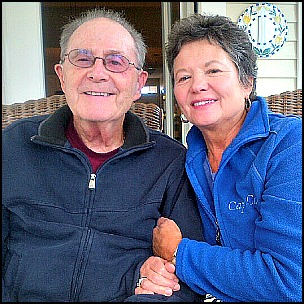
74 Leisure Green Drive,
moved in New Years Eve 2014
Originally from: Sy--Brooklyn, NY;
Carol--Westminister, MA
Previous residences: Marlboro, MA, Osterville, MA
What kind of work did you do:
Sy -- Labor and employment lawyer; professor of labor management at Framingham State. Carol -- Digital Corp, corporate software services; second career in interior decorating, specializing in window treatments.
Why Southport: We wanted an active community, looked at many condo associations before selecting Southport.
Like best about Southport: Active lifestyle, tennis, physical activities, walking, classes. Like having to plan ahead...everything right here.
Like beast: So far, no issues.
Want to get involved with: Sy -- Physical activities, tennis, golf and joining a history group. Carol -- Wants to do everything! Tennis, garden club, sewing, anything with fabrics. Would like to see cooking classes.
Susan Williams 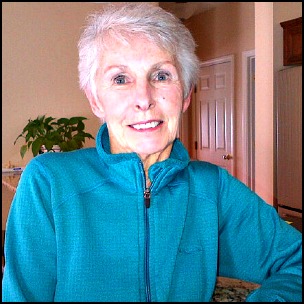
64 Grayhawk Drive, moved in March 2015
Originally from: Swampscott, MA
Previous residences: Lunenburg, Franklin, Milford and North Falmouth, MA
Why Southport: I'm a widow and didn't want to live alone in a big house. Two friends living at Southport influenced me to move here.
Like best about Southport: Activity choices, opportunity to spend time with other women and learn about myself.
Like least: Want to see recycling.
Want to get involved with: Golf, exercise classes. Taking trips; I'll be taking the trip to New Orleans in May.
|
|
A Lesson from My Mother's Adversity
by Roy Smith
|
Looking back, the first indication that my mother was deaf could have been when I was about two. I remember a warm day when I was temporarily relegated to an area on the side porch near the kitchen door, where there was a gate across the steps to the walkway. I could hear my mother working in her basement laundry room as there was an open cellar window beneath the slatted wood floor where I was playing. Surrounded by a few toys I was quite happy.
A neighbor across the road owned a large, shaggy, elderly Airedale that roamed freely in the immediate neighborhood. He was a particularly friendly dog, however, we were not well acquainted when he discovered that I was available for a visit. He wandered up to the step and put his graying, whiskered nose through my gate and stared languidly as I geared up to yell for Mother. The poor dog decided that I wasn't going to be up for a visit and slowly ambled off.
I could hear Mother slamming the ringer release of the washer and knew she was nearby but not paying attention to my cries. That increased my distress and I cranked up the fuss. I was never left alone for long and she soon appeared, failing to understand why I was so unhappy even after I pointed to the old dog staring back from the road. I remember that she made matters worse by greeting the dog affectionately by name. I'm sure that I soon settled down; no harm done, but the memory was filed away.
|
| |
Isabel Smith and her grandsons Jason and Aaron. As her hearing
and sight declined with age, Aaron became the family member
who could best maintain communication with her.
|
My mother had lost hearing in both ears due to a severe infection. An active, intelligent, outgoing woman, she found the sudden onset of this disability difficult to accept, mainly due to the reaction of others. She had to deal with an extraordinary amount of ignorance and plain rudeness in those early years. Over time she learned to handle it, usually with grace, sometimes not. I believe that the lack of acceptance and understanding of persons with disabilities in the late 30s early 40s would be shocking to those not familiar with those times.
Mother quickly learned to be an excellent lip-reader. "Please, just speak in a normal voice, I can read your lips," she would say. But more often than not the speaker couldn't resist raising his/her voice, often to a shout, a common reaction to deafness. Unfortunately, loud sounds, including the spoken word, were heard only as jumbled noise. This problem, even with hearing aids, caused her untold frustration for most of her life.
I witnessed subtle cruelty as well as ignorance. I recall events such as grade school functions where Mother found herself with people she didn't know well. She forced herself to meet other parents, putting her lip-reading skills to best use. Occasionally, however, individuals felt it their duty to inform others, with a hand to the side of the mouth, that Mrs. Smith was deaf and probably couldn't hear them. This usually resulted in subtle stares, uncomfortable smiles and a lull in conversation. I never let on that I overheard these comments; my mother didn't need or want my sympathy or protection. Such experiences were upsetting but rarely discussed at home. Mother developed some tolerance but had a short fuse; an occasional sharp retort came more easily as time passed.
In those days, hearing aids were large and ungainly - and expensive. But finally giving in to my father's imploring, Mother agreed to the investment. The Westinghouse salesman made several visits to the house and late one evening both parents came to my bedroom after he had departed. Mother sat on the side of the bed where I lay reading and said, "Look what I've got."
The hearing aid consisted of an earpiece connected by a black wire to a 2" x 6" x1/2" receiver that was clipped to the top center of her corset, connected in turn to a bulky battery pack fastened to the lower edge of her undergarment at the right hip. It was a lot of black equipment, and the latest model. She said, "Talk to me normally." I did and she said, "I can hear you. Isn't that grand?" Needless to say we were all pretty happy.
Mother became more resilient and led an active, productive family and social life. She traded for newer hearing aids as the equipment improved and became less obvious. Being able to conceal the instrument was very important to her self confidence. She gave her used instruments to folks who could not afford to purchase hearing aids and worked diligently with the Quota Club to raise funds for charities benefiting the deaf.
Unfortunately, the hearing aids became less effective as Mother aged. As she approached 100 her hearing loss became total and her eyesight deteriorated as well. She remained strong mentally but it became extremely difficult to communicate with her. I learned to trace the beginning letter of a word in the palm of her hand with my finger and she caught on fast to that. The only person who managed to communicate easily with her was my younger son. He would sit close, look directly at his grandmother in his relaxed, casual manner and listen to her stories, ask questions and comment - to which she responded just as easily. It was beautiful to watch this remarkable gift of connection between two people who had a great love for each other.
We learn so much from our parents and, if given the opportunity, from grandparents. Some things are actively taught and others are just absorbed quite naturally. My mother taught me how to deal with adversities and certain social injustices, how to make the most of natural abilities and to ignore destructive influences. The memory of her experience as a deaf person will always be with me. I can only hope that this has made me a more tolerant and respectful person. If I fail in this, my mother would be very disappointed.
|
|
Non Compos Mendes
by Bob Mendes
|
- FIRST THINGS FIRST Have you signed up yet for Pastabilities, the Scholarship Dinner? It's always one of Southport's best events and your presence means a great deal to the Scholarship Committee. You'll get a great meal catered by Wimpy's and see an excellent show.
- Watching a snippet of a fashion show from Paris, I wondered why all the models look so angry. There wasn't a smile to be seen. When I shared my wonder with Bette, she had an obvious solution. "Look how skinny they are, they're all hungry."
- Next time you see Joe Noonan, show him some respect. He just finished the Boston Marathon -- his 16th! -- in 3 hours and 50 minutes, placing 15th in his age category. If you don't think that's a big deal, you're wrong.It's a very big deal!
- Driving through our imposing security gate the other day, I noticed that one of our crack security guards almost looked up. It occurred to me that anyone going through the "Residents Only" lane could be one of two things: a resident or an ax murderer.
- It's about time we had "The Talk." There are a few Southport residents (this one included) working on a program to initiate curbside recycling. It's not going well. There are obstacles that include contractors, costs, procedures and other factors. The bottom line is that we may or may not ever have a curbside recycling program. However, that should not stop you from setting up your own recycling program. It couldn't be simpler. Just make the first left turn off Route 28 after the rotary, then make a right turn at the sign that says "Transfer Station." Dump your stuff, turn around and come home. There, it took less than 15 minutes and you're a recycler. Good job.
- Here's some advice for shoelace manufacturers: Instead of informing us about the length of the lace on each package, tell us how many eyelets the laces are appropriate for. I have no idea what length lace I need, but I am capable of counting the number of eyelets in my shoe.
- Governor Charlie Baker is looking for ways to improve the MBTA. Sources tell me the first thing he'll do is change the name of the "Charlie Card" to something else.
- ASK MISS INFORMED
Dear Miss Informed:
My husband and I love desserts, which has caused us
to put on a great deal of weight over the years. What do you suggest?
F.A.
Dear F.A.:
You seem to be doing a pretty good job, but there are many other ways to put on weight that you may not have thought of. Try pasta two or three times a day, or big gobs of gravy on everything you eat. One of my favorites is a mashed potato sandwich on white bread with tons of butter. However, desserts are also important. Don't give up on them.
P.S. A sedentary lifestyle is also a great aid to putting on weight.
Chubbily, Miss Informed
- Department of Are You Kidding Me? A TV anchor in the fair city of Cleveland who goes by the name of Madonna advised a reporter in the field who was covering a black music festival as follows: "Could you repeat that, I couldn't hear you because of all the jigaboo music in the background."
- FINAL THOUGHT: With casinos failing in Atlantic City, Rhode Island, Connecticut and who knows where else, our Commonwealth is boldly going full speed ahead structuring contracts for THREE casinos AND a slots parlor. Are the inmates finally running the asylum?
|
|
Outback & Down Under
by Karlyn Curran
|
Merry Smith and I found a unique way to escape the March winter doldrums - we spent three weeks in Australia and New Zealand. On our 25-hour flight, in three segments, we crossed the International Dateline and the Equator, gaining a day and transforming our weather. Seasons in the Southern Hemisphere are the opposite of ours, but because Australia is a large country, similar in size to the United States, we experienced summer temperatures in the 90s in the tropical northeast and interior of the country and autumn weather in Melbourne and Sydney. By the time we arrived on the South Island of New Zealand, which lies closer to the South Pole, it was time to pull out sweaters and windbreakers. It was a wonderful way to flee Cape Cod's harsh winter.
Our tour began in Cairns, Australia, which offers easy access to the tropical rainforest and the Great Barrier Reef. There, we took a duck tour through the rainforest and saw native Australian mammals, including koalas, kangaroos, dingoes and Tasmanian devils, in a mini-zoo. We went snorkeling at the Great Barrier Reef, which extends 1240 miles along the east coast of Australia. It was my first time to snorkel and I loved it, but we were both disappointed in the unexpectedly dull colors of the reef.
 Most of the interior and western part of Australia -- the Outback -- is sparsely populated semi-arid desert. We flew to Ayers Rock (seen above), or Uluru as it is known by the aboriginals, exploring it in the daytime and returning at dusk to watch it change colors as it reflected the setting sun. Uluru is a huge monolith sculpted by wind and weather from a single piece of sandstone. Rising 1142' above the desert floor, it has a circumference of 5.8 miles and extends three miles beneath the desert surface. It is possible, although difficult, to climb it, but Aboriginals consider it a spiritual place and visitors are discouraged from climbing it out of respect for its sacredness. Most of the interior and western part of Australia -- the Outback -- is sparsely populated semi-arid desert. We flew to Ayers Rock (seen above), or Uluru as it is known by the aboriginals, exploring it in the daytime and returning at dusk to watch it change colors as it reflected the setting sun. Uluru is a huge monolith sculpted by wind and weather from a single piece of sandstone. Rising 1142' above the desert floor, it has a circumference of 5.8 miles and extends three miles beneath the desert surface. It is possible, although difficult, to climb it, but Aboriginals consider it a spiritual place and visitors are discouraged from climbing it out of respect for its sacredness.
|
| |
An aboriginal demonstrates the didgeridoo.
|
The following day we drove 285 miles through the Outback to Alice Springs, the largest town (population 28,605) in the Outback. We passed sheep and cattle "stations" (i.e, huge ranches) and "road trains" (truck cabs pulling as many as three containers). The Todd River flows through Alice Springs, but only for a short time after a rare substantial rainfall. The town stages its own version of England's Henley Regatta, an annual rowing event on the Thames River. In the Alice Springs version, the boats have no bottoms and the "crew" runs down the dry riverbed to the finish line!
In Alice Springs we were introduced to the aboriginal culture, especially their dance, music, art and hunting methods. We also enjoyed a very informative visit to the Royal Flying Doctor Service, which supplies medical care to patients in the Outback.
The highlight of our short stay in Melbourne, a Victorian city on the southern coast, was a visit to Phillips Island, a nature preserve and home to the world's largest colony of the 15" tall Little Penguins (seen below). The birds spend their day at sea, fishing and eating, safe from their predators on the land. As a group they waddle out of the water at dusk and cross the beach on their way to their burrows in the dunes; the process is reversed at sunrise. We sat on benches in the drizzle and watched the evening parade.

Sydney, the largest city in Australia, is a beautiful and inviting place. It has a compact downtown area and most tourist attractions are within walking distance. Its two iconic landmarks are the Sydney Opera House and the Harbour Bridge. I have a cousin who lives in a suburb of Sydney, so I took a very clean, modern double-decker train to her town and had a delightful visit with her and her daughter and son-in-law.
New Zealand, a small country of incredible beauty, lies 900 miles east of Australia across the Tasman Sea. It is 990 miles long with a maximum width of only 250 miles. Its two major land masses -- North Island and South Island -- are separated by the
14-mile-wide Cook Strait. Both islands are volcanic in origin, but the South Island's dramatic scenery has been created by glaciers. We drove 1200 miles over the course of seven days, exploring the spectacular landscape of the South Island.
We flew into Christchurch, the largest city (population 360,000) on the South Island. The city was devastated by earthquakes in 2010 and 2011, suffering widespread damage and loss of life. More than 900 buildings in the downtown area were declared structurally unsafe and were demolished. For two years the city was a demolition zone and reconstruction only begun in earnest in 2013. Previously known as "the Garden City," Christchurch will have even more open areas and is being rebuilt as a planned beautiful city. We visited the Quake City multimedia exhibit and the ReSTART mall, a temporary outdoor mall made of colorful shipping containers that house about forty upscale stores, a bank and several bars and cafes.

Leaving Christchurch, we headed for Mount Cook and Franz Josef Glacier in the Southern Alps. Snow-covered Mount Cook (seen above), at 12,218', is New Zealand's tallest mountain. We spent a night at the base lodge but didn't see much because of the fog and drizzle. Franz Josef Glacier was another story; we walked for almost a half hour along a braided riverbed - a river that changes its course after the spring snow melt or a heavy rain, forging a new path through the grey-white rocks that lie underneath it. It was a sunny day and we got close enough to the glacier to get a good view. The only way to get a better view is to board a helicopter that flies people to the face of the glacier, where they can walk on it.
My favorite town in New Zealand is Queenstown. The town is small and charming, sited on beautiful Lake Wakatipu and bordered by high mountain ranges, including the aptly named Remarkable Mountains. It is the tourist and adventure capital of the South Island. A popular ski resort in the winter, its summer offerings include almost every outdoor activity one could imagine, including hiking, bungee jumping, wild-water boat rides, sightseeing boat rides, off-road jeep trips, wine tasting and more. We took a four-hour bus ride through Fiordland National Park to Milford Sound (a fiord), boarded a sightseeing boat and saw spectacular jagged mountain peaks. Then we flew over the Sound and the nearby mountains back to Queenstown in a ten-passenger plane.
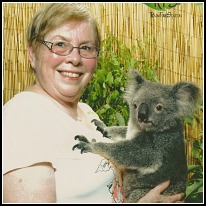 If you'd like to escape If you'd like to escape
part of Cape Cod's winter next year
and have the stamina for a long plane ride,
try something different next year.
Head for the lands "down under"!
|
|
|
|
| |
Summer Cuts by Rosanne Francesconi
|
This year's Pastabilities/Scholarship Dinner Raffle on May 29 promises to be one of the best ever. The list of objects and cash donations from residents and gift cards from local merchants is growing rapidly. Save your money to buy lots of raffle tickets and feel free to contribute something of value to the raffle -- contact Nancy Cohen. Here's what's on offer so far.
Raffle Objects
A quilt by the Southport Quilters (see above), paintings by Lorraine Benjamin and Rosanne Francesconi, a golf stool from Ed & Barbara Bandoni, six hand-carved bottle stoppers by Dennis Blais, two hand-made trinket boxes by Roy Smith, a large photograph by Claudette La Bonte, two autographed photos of NE Patriots players and a theorem painting by Kathy Hutcheson.
|
| |
Hand-carved bottle stoppers by Dennis Blais
|
|
|
| |
Hand-made trinket box by Roy Smith
|
|
|
| |
Theorem painting by Kathy Hutcheson
|
Gift Certificates
From local merchants, including Black Dog, Bleu, Color Me Mine, Cooke's Seafood, Country Smiles Doll Shop, Edible Arrangements, Estia, Marathon Sports, and Zoe's Pizza.
Cash Donations
A total of $1560, including gifts from Ed & Barbara Bandoni, Ron Bonvie, Budget Blinds, Brenda Halfond, David & Billie Kapp, Forrest & Shirley Pirovano, Ralph & Rita Pottle, Eda & Marty Stepper, Sara Faye Tarlin and Doris & Larry Weishaus.
|
Seen at Southport
|
Walking on Sunshine Beach
photos by Carol Fredian
|
| |
The Shenaigans provided the music...
|
|
| |
...and everyone had a great evening.
|
|
| |
Signs of Spring by Larry Cron
|
|
|
| |
Fox on Portside Drive by Lydia Biersteker
|
|
Tennis Season Opens
photos by Elinor Saltz
|
|
Tennis Pro Mark Warner will be offering clinics for players who want to brush up on their game.
|
|
| |
Southport tennis players ready for the 2015 season.
|
|
|
Contributors to the
May 2015 Edition
Southport Village Voices
|
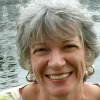 Lydia Biersteker grew up in Somerville, Massachusetts. She met her husband Dale on the beach at Falmouth Heights in 1969, while he was stationed at Fort Devens. After Dale retired in 2005 from his executive position with the USPS, they moved to Vero Beach, Florida but decided that they preferred New England. They moved to Southport in 2011. Dale plays golf, and Lydia likes gardening, walking, writing poetry and short prose, exploring genealogy, and lunching with friends. Together, they enjoy dining, exploring wineries and brew pubs, walking, traveling and playing with their grandkids. Lydia Biersteker grew up in Somerville, Massachusetts. She met her husband Dale on the beach at Falmouth Heights in 1969, while he was stationed at Fort Devens. After Dale retired in 2005 from his executive position with the USPS, they moved to Vero Beach, Florida but decided that they preferred New England. They moved to Southport in 2011. Dale plays golf, and Lydia likes gardening, walking, writing poetry and short prose, exploring genealogy, and lunching with friends. Together, they enjoy dining, exploring wineries and brew pubs, walking, traveling and playing with their grandkids.
 Karlyn Curran moved to Southport from New Jersey in 2003. She has a daughter, son-in-law and three grandchildren in Falmouth and two sons, their wives and two granddaughters near Hanover NH. After her husband passed away and she retired from her teaching career, she moved to New England to be closer to her children. She loves Southport and Cape Cod. Even more than that, she loves being a "hands-on" grandma. She caught the travel bug from her husband and this has resulted in a chronic condition. She recently started a Travel Committee for Southport residents. Karlyn Curran moved to Southport from New Jersey in 2003. She has a daughter, son-in-law and three grandchildren in Falmouth and two sons, their wives and two granddaughters near Hanover NH. After her husband passed away and she retired from her teaching career, she moved to New England to be closer to her children. She loves Southport and Cape Cod. Even more than that, she loves being a "hands-on" grandma. She caught the travel bug from her husband and this has resulted in a chronic condition. She recently started a Travel Committee for Southport residents.
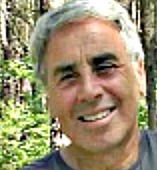 Andy Jablon Andy Jablon owns a television production company in Watertown that provides crews to shoot stories in New England for the major TV networks. As producer, he interviews all sorts of interesting people on a regular basis. His wife Tracy Tebbutt works at a cancer pharmaceutical company in Cambridge. Since July 2014, they split their time between Southport and Boston, depending on work schedules. Both are enthusiastic cyclists, riding their bikes along the Charles River to work in almost all kinds of weather. They relax by walking, biking, playing tennis and soaking in the hot tub.
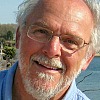 David Kapp, with his wife Billie, moved from Connecticut to Southport in 2009. David retired from a career as a university library administrator, after working in the libraries at Brandeis, Harvard and the University of Connecticut. He was a building consultant for the planning of a number of major university libraries and was, for many years, the editor of Connecticut Libraries. Billie enjoyed a career as an educator and social sciences consultant. The Kapps are frequent visitors to Hawaii where their daughter, son, grandson and many other family members live. David Kapp, with his wife Billie, moved from Connecticut to Southport in 2009. David retired from a career as a university library administrator, after working in the libraries at Brandeis, Harvard and the University of Connecticut. He was a building consultant for the planning of a number of major university libraries and was, for many years, the editor of Connecticut Libraries. Billie enjoyed a career as an educator and social sciences consultant. The Kapps are frequent visitors to Hawaii where their daughter, son, grandson and many other family members live.
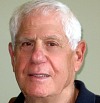 Bob Mendes Bob Mendes began his career as an advertising copywriter at Doyle Dane Bernbach in New York before becoming senior vice president of marketing for a west coast department store chain. He left that position to start Pacific Sports, a sports and general marketing agency. There he developed "The Reading Team," a children's literacy program sponsored by the National Football League and the American Library Association, which used NFL players as literacy role models. Bob is the author of "A Twentieth Century Odyssey, the Bob Mathias Story." After retiring, he served as executive director of the Glendora, CA Chamber of Commerce. When grandson Adam was born, Bob and Bette moved to Cape Cod, where they recently celebrated their 45th wedding anniversary. Neither retires well. He's had a number of part-time jobs, has written two more books, and volunteers. Bette serves on committees at Southport and at the Falmouth Jewish Congregation. Their son Steve is a pediatrician and lives in Marion with his wife Sarah and their children, and a second son, Jeff, practices law in Indianapolis.
 Ray Schumack Ray Schumack worked as a magazine editor, publicity director and an account executive for a Madison Avenue advertising and public relations agency. He served for 15 years as chief communications officer for a Fortune 500 company, responsible for corporate communications and product promotion literature. His business articles have appeared in the Wall Street Journal, the New York Times, Fortune magazine and elsewhere. He established his own public relations firm and continues to serve several clients in retirement. His memoir, News Releases from the Korean War, recounts his experiences as a war correspondent.
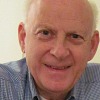
Roy Smith grew up in East and West Bridgewater, MA. He served as a corpsman in the US Coast Guard on the weather cutter USCGCCastle Rock and the icebreaker USCGC Eastwind , on voyages from the Arctic to the Antarctic. In his thirty-year career at the Woods Hole Oceanographic Institution he was initially a sea-going chemistry tech and later an administrator in the Geology and Geophysics Department. After retiring from WHOI, he was general manager of McLane Research Laboratories in Falmouth. Roy met his wife Cynthia at WHOI, where she worked summers while on teaching break. They moved to Southport two years ago and consider the choice one of their best. Since retirement both have volunteered at the Falmouth Service Center. Roy has charitable woodworking projects underway at all times and Cynthia is involved with various charities on the Upper Cape. They have two sons, Jason, an engineer at WHOI, and Aaron, a sculptor, and two beautiful granddaughters.
SPECIAL THANKS TO
Nancy Cohen for raffle information
and to my proofreader Billie Kapp.
|
|
|
|
|
|
|
|